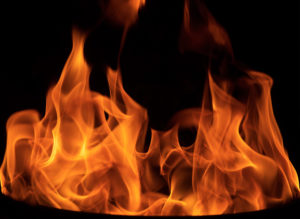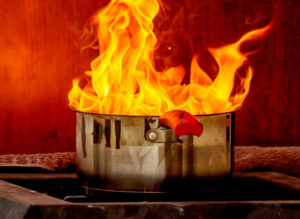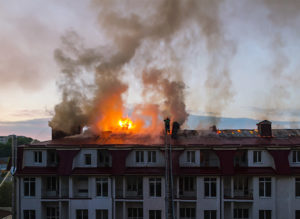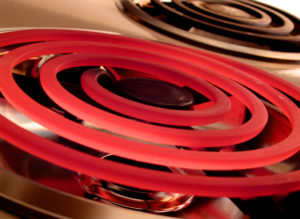 It is common knowledge that the winter months bring more risk for house fires. The combination of holiday decorations, heating systems, and indoor cooking all contribute to the fact that you and your family are more likely to suffer from a house fire during these cold months. Take some time to prepare your home, gain knowledge on fire safety, and stay vigilant against fire risks to help protect you and your loved ones. These simple tips, which you can use all year round, will help you reduce the danger of fires in your home this winter!
It is common knowledge that the winter months bring more risk for house fires. The combination of holiday decorations, heating systems, and indoor cooking all contribute to the fact that you and your family are more likely to suffer from a house fire during these cold months. Take some time to prepare your home, gain knowledge on fire safety, and stay vigilant against fire risks to help protect you and your loved ones. These simple tips, which you can use all year round, will help you reduce the danger of fires in your home this winter!
Preparing for Winter
You can practice making your home safer in preparation for the winter months throughout the year. If you’re a new or first-time homeowner, you should be aware of safety precautions you can take that you may never have thought of when living in an apartment or with your family. However, even if you’ve owned your home for years, you may not realize the importance of insurance, a home warranty, or just gaining and sharing knowledge on fire safety.
- Homeowners insurance is an extremely important investment in terms of protecting your home from a fire. Insurance will protect the structure of your home, personal belongings, and any additional cost of living if you have to leave your house because of natural disaster damage. It’s especially important to equip your home with insurance if you live in an area with winter storms, as these can also increase the likelihood of a fire due to the extreme cold and wind.
- Another type of home protection, which is often overlooked, is home warranty plans. The facts of home warranty policies make it hard to ignore that they are a vital investment for new homeowners. Home warranty contracts allow you to ensure that your major appliances, like your furnace, are serviced regularly and covered by this plan should they stop working.
- Never underestimate the power of doing research on home fires and sharing fire safety information with your family. If your home is already protected by insurance and a home warranty policy, then take time to make fire safety plans for your family. Inform your family about the best ways to suppress a fire and make sure everyone knows where your fire extinguisher, StoveTop FireStop product, and smoke detectors are located around the house.
This type of fire readiness can be practiced all year, so don’t wait until winter to find an insurance and home warranty plan that works best for you. Plus, the sooner you have a fire safety plan for your family, the better. These types of plans take knowledge and practice, especially for kids, so it’s never too late to start! These three tips will give you peace of mind to know that you’re taking every precaution ahead of this winter to keep your family safe.
Staying vigilant this winter
Now that you have your home prepared for the risk of fire, let’s cover the ways you and your family can stay vigilant during these cold months when fires are most common. As we know, there is good reason fires are more common this time of year; the combination of heating, cooking indoors, decorations, and storms pose a potential danger to your family and your home.
Firstly, ensure your smoke and carbon monoxide detectors are working and have new batteries in them to last you through the winter. Testing a detector is easy, simply press the “Test” button on your system! If the beep is so quiet that you don’t think it would wake you up in the night, replace the batteries and see if it gets louder. If it remains weak, then consider buying a new system. It’s just as important to also test your carbon monoxide detectors this winter because indoor heating and cooking systems release this odorless, colorless and deadly gas.
Equipping your home with fire safety gear, as mentioned above, is critical to stopping a fire more quickly. Our products for your rangehood can stop a stove fire at the source, even if no one is in the kitchen to witness the fire starting! Additionally, keeping a fire extinguisher where it’s closely accessible on every floor of your home is ideal. Most commonly, fire extinguishers are kept in open areas near exits and in the kitchen.
Finally, being vigilant includes knowing how to prevent winter fires around the house. Never leave candles unattended near anything flammable, such as curtains or table cloths, and always blow them out before you leave the house. Especially in winter, when you more likely have an array of beautiful, but flammable, decorative items around. If your family uses a space heater, it’s very important to know the safety usage of your product. It’s best practice to have a 3-foot area around your space heater that’s clear of any other items and to always turn it off before going to sleep. Additionally, never use extension cords for a space heater or any type of heating or cooling system to avoid electrical fires.
Home fires are a devastating truth for thousands of families all over the U.S. every year but, as you know, there are simple ways to protect yours! Knowledge of fire safety in your kitchen, investing in home protection, and sharing a safety plan with your family are all great practices to reduce the risk of a fire in your home.
 Although any building can be at risk for fire, the
Although any building can be at risk for fire, the While cooking with grease can enhance the flavor of your food, it also can increase the risk of a kitchen fire. In fact, the National Fire Protection Association (NFPA) notes that
While cooking with grease can enhance the flavor of your food, it also can increase the risk of a kitchen fire. In fact, the National Fire Protection Association (NFPA) notes that  Knowing how to handle fires in the home is important for every homeowner or tenant. But with so many fires still causing damage, injury and death every year, it’s apparent that more education and better tools are needed to save lives and property.
Knowing how to handle fires in the home is important for every homeowner or tenant. But with so many fires still causing damage, injury and death every year, it’s apparent that more education and better tools are needed to save lives and property. Any building is at risk for fires, though causes vary with the structure and how it’s used. Even among residential fires, the risks can be very different, depending on whether it’s a single-family residence or a multifamily dwelling such as an apartment complex, condominium, townhouse or row house.
Any building is at risk for fires, though causes vary with the structure and how it’s used. Even among residential fires, the risks can be very different, depending on whether it’s a single-family residence or a multifamily dwelling such as an apartment complex, condominium, townhouse or row house. Every day, millions of people cook a meal without giving it a second thought. But much like getting behind the wheel of a car, each time they fire up a burner or turn on the oven, they’re putting themselves at risk — even though it’s something they’ve probably done countless times.
Every day, millions of people cook a meal without giving it a second thought. But much like getting behind the wheel of a car, each time they fire up a burner or turn on the oven, they’re putting themselves at risk — even though it’s something they’ve probably done countless times.